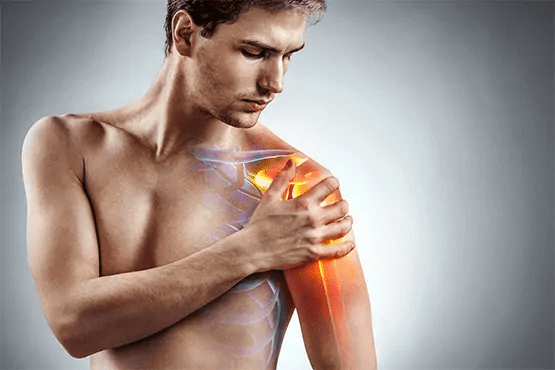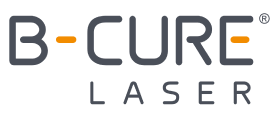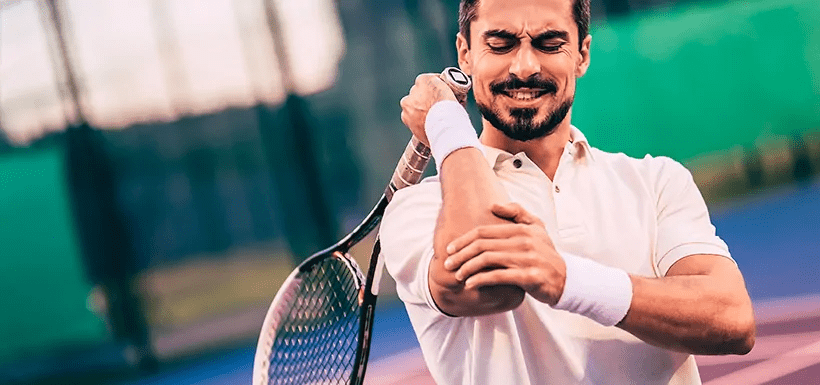What Are the Causes and How Can Pain Be Treated with B-Cure Laser?
Shoulder pain is one of the most common reasons people suffer pain from a skeletal source. Shoulder injuries usually derive from continuous pressure on the shoulder joint as a result of intensive sports activity or from physical labour. Adults may suffer from shoulder pain due to erosion and calcification, and many suffer from tears in the shoulder’s tendons or a frozen shoulder.
Approximately 10% of the population complains of shoulder pain at least once during their lifetime. The common symptoms for the various diagnoses include limited motion in the area where the arm connects to the shoulder, which increases during movement and limits daily activity.
What Shoulder Problem Do You Suffer From?
The shoulder is one of the most complex joints in the body. Shoulder impairment is the most common cause of pain and loss in the range of motion. Shoulder impairment occurs when the movement of the joint is restricted in any way. The most common reasons for shoulder impairment are tendonitis and bursitis. When movement is impaired, the tissues surrounding the rotator cuff often become inflamed, may wear thin and may tear.
Treating impairment syndrome prior to a rotator cuff tear is by far the best option as inflamed tissue is easier to heal than torn tissue.
The rotator cuff includes four muscle tendons – the supraspinatus, the infraspinatus, the teres minor, and subscapularis muscles. Tendonitis can set in and the tendons may become impaired under the top of the shoulder (acromion process of the scapula) or the tendons may be partially or fully torn. The most common tear is in the supraspinatus muscle which runs along the top of the shoulder, under the acromion process and attaches to the top of the arm bone (humerus). When this muscle is affected, lifting the arm upwards and to the side can be extremely painful or even impossible. Rotator cuff issues are often associated with bicep tendonitis and bursitis, although these conditions may occur alone. In bicep tendonitis, the tendon becomes inflamed or fibrotic and commonly creates a deep throbbing ache in the front of the shoulder. Bursitis (inflamed shoulder cushion) can create extreme acute pain while raising the arm. Tears in the labrum (cartilage cuff inside the socket) can create deep joint pain and frozen shoulder. Arthritis in the ball and socket joint or where the collarbone meets the shoulder may cause pain and a reduction in the range of motion.
What Are the Treatment Options?
Anti-inflammatory drugs create problems with extended use. Surgery is necessary to repair a complete rotator cuff tear. However, for most other conditions, the effectiveness of shoulder surgery, according to published reports, is difficult to predict, at best. Exercise and stretching are important, but may not be feasible when the shoulder is too painful to move. Laser therapy is a very effective treatment for promoting the healing of shoulder problems. Extensive research has shown that laser light therapy is a safe and effective treatment for tendonitis, bursitis, arthritis and other issues that affect the shoulder. It reduces inflammation, increases circulation, speeds up metabolism on a cellular level, reduces fibrosis and scar tissue and strengthens tissue. These mechanisms result in the rapid resolution of pain. Placebo-controlled studies of laser therapy for frozen shoulder have shown a significant reduction in pain and disability.

B-Cure Laser for the Treatment of Shoulder Pain
B-Cure Laser provides breakthrough laser therapy, offering the power of some professional lasers as used in clinics, in a lightweight portable device that may be used from the comfort of home.
The treatment is safe, effective and may provide lasting pain relief.
B-Cure Laser’s restorative power is provided by advanced laser technology.
B-Cure Laser should be placed in contact with the skin allowing the photon energy to penetrate the tissues. This stimulates the body to produce adenosine triphosphate otherwise known as ATP, which carries energy within the cells. The ATP interacts with various biomolecules inside the cells promoting normal cell function and enhancing the body’s natural processes.
Patients recover from muscular, skeletal, and nerve injuries as cells regenerate faster and function better.
Therapeutic effects of LLLT (laser phototherapy) include:
- Increased production of ATP (Adenosine Triphosphate)
- Increased cellular metabolism
- Increased collagen production
- Increased enzyme production
- Increased protein synthesis
- Improved blood circulation
- Improved lymphatic flow and drainage
- Reduced inflammation
All this serves to boost the body’s natural healing power, targeting the root causes of pain and providing rapid relief.
B-Cure Laser is unique due to it’s beam that covers a surface of 4.5 cm, making it possible to treat a wide range of painful conditions easily, effectively and quickly. B-Cure Laser is safe for all ages, and does not require protective eyewear during use.
B-Cure Laser is now available for home use and has been proven clinically effective and safe. The treatment has no known side effects and is a non-invasive method for treating many types of orthopedic conditions.
What are the benefits of B-Cure Laser?
- May reduce chronic pain
- Non-invasive and non-surgical treatment
- Suitable for all ages
- No known side effects
- Clinically proven by many studies
- Easy and safe for home use
Treatment Protocol
Treatment should be performed around the shoulder joint by placing the device perpendicular to the joint for a duration of 8 minutes. Set the device for an additional 8 minutes and place the device on the upper side of the shoulder. It is also recommended and beneficial to treat for an additional 8 minutes on the back of the shoulder. If the pain radiates to the shoulder blades, treat under the shoulder blades for a duration of 8 minutes on each shoulder blade.
Experience shows that pain relief may be expected within days.
For ease of use, an adjustable stand is available to stabilize the device and provide treatment without movement, allowing the laser beam to penetrate deeply into the tissues.
For optimal results, repeat the treatment at least twice a day.




